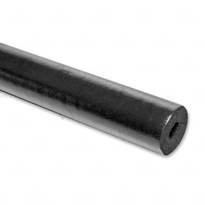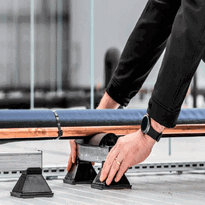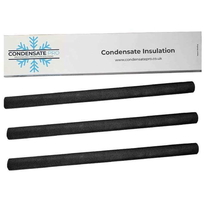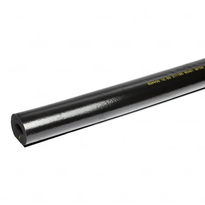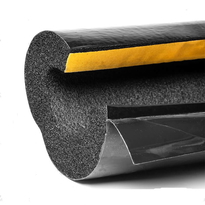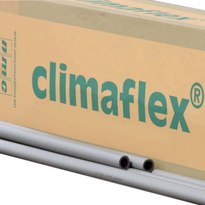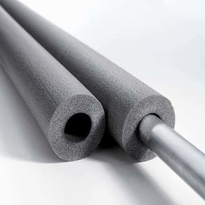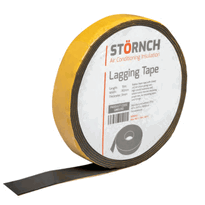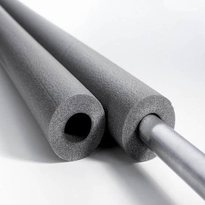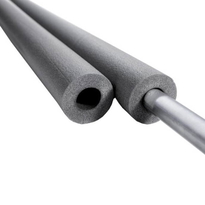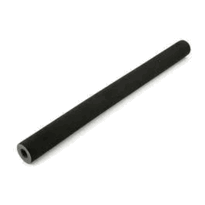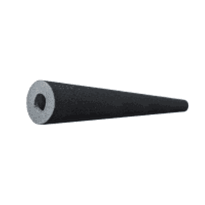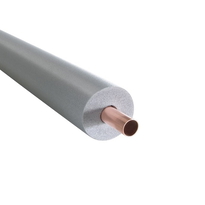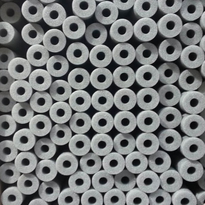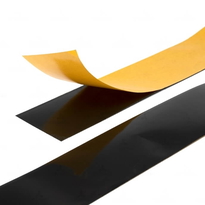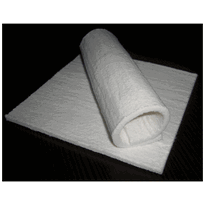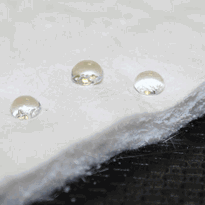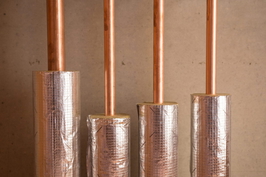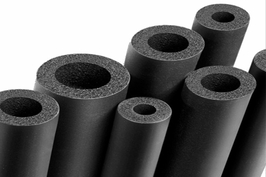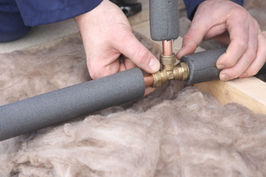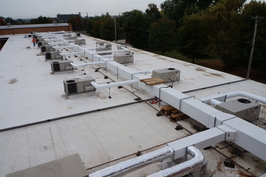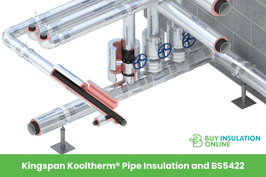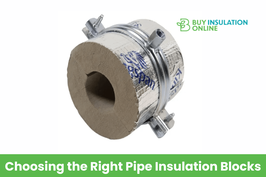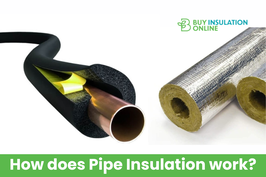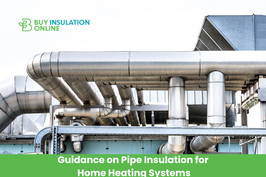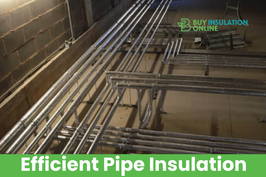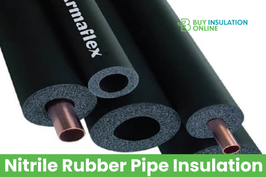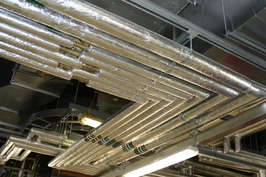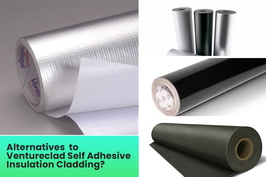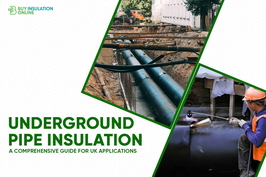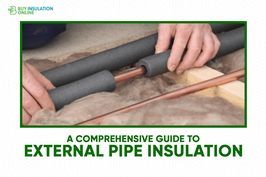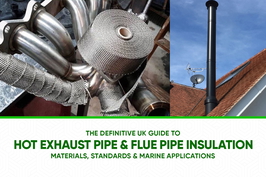Outside Copper Pipe Insulation
Proper outdoor copper pipe insulation involves selecting durable materials such as foam, rubber, or fiberglass, which offer effective thermal resistance and moisture protection. Foam insulation, particularly closed-cell types, resists moisture and weathering, while rubber provides flexibility and resistance to UV rays and temperature fluctuations.
Correct installation includes precise measurement, sealing all joints and seams, and applying protective coverings to prevent physical damage and moisture ingress. Following these steps enhances the longevity of the pipe system and improves energy efficiency. Further guidance on practical techniques and material options can help optimize insulation performance in outdoor environments.
Types of Materials for Outdoor Copper Pipe Insulation
Selecting the appropriate materials for outdoor copper pipe insulation requires careful consideration of environmental exposure, durability, thermal performance, and ease of installation.
Foam insulation materials, typically made from polyethylene or elastomeric foam with a closed-cell structure, offer lightweight and cost-effective solutions. These pre-slit tubes are designed to simplify installation, making them user-friendly. They provide moderate thermal insulation and help reduce condensation, which can prevent corrosion of the copper pipes. However, their durability can decline when exposed to ultraviolet (UV) rays unless they're treated with protective coatings or UV-resistant finishes. To enhance longevity, selecting foam insulation with a UV-resistant coating can be particularly beneficial. The measurement of pipe diameter is essential to ensure the insulation fits properly and performs its protective functions effectively.
Rubber (elastomeric) insulation, crafted from synthetic rubber, exhibits excellent resistance to moisture, UV rays, and temperature extremes. This durability makes it particularly suitable for pipes situated in exposed outdoor environments where environmental conditions are harsh. The flexibility of rubber insulation also facilitates easier installation around complex pipe configurations and joints.
Fiberglass insulation offers high thermal resistance and can withstand elevated temperatures, making it ideal in situations where temperature control is crucial. To prevent moisture ingress, it must be properly sealed and protected with appropriate covers or jackets, especially in outdoor settings where rain and humidity are prevalent.
Mineral wool provides exceptional insulation properties, fire resistance, and soundproofing capabilities. This material is most suitable for demanding industrial environments or locations where fire safety is a priority, offering long-lasting protection against the elements.
Benefits of Insulating Copper Pipes Outside
Insulating copper pipes situated outdoors offers essential advantages that enhance the durability and efficiency of plumbing systems exposed to the UK's variable weather conditions. Proper insulation helps prevent pipes from freezing by maintaining internal temperatures above freezing point, thereby avoiding pipe bursts caused by water expansion during frost. It also acts as a protective barrier against moisture, reducing condensation and corrosion, which can significantly extend the lifespan of pipes.
In addition, effective insulation improves energy efficiency by reducing heat loss from hot water pipes. This not only lowers utility bills but also contributes to environmental sustainability by conserving energy. Quality insulation materials play a vital role in ensuring system reliability and prolonging the service life of the entire plumbing setup.
The table below summarises the key benefits of insulating outdoor copper pipes:
Benefit |
Description |
Impact |
| Freeze prevention | Maintains temperature above freezing point | Safeguards against pipe bursts |
| Moisture control | Reduces condensation and corrosion | Extends pipe lifespan |
| Energy efficiency | Minimises heat loss from hot water pipes | Lowers energy bills |
| Durability | Resists weather and environmental challenges | Decreases maintenance requirements |
| System lifespan | Extends overall pipe and system operational life | Enhances reliability and reduces repair costs |
Installation Tips for Exterior Copper Pipe Insulation
To ensure a successful installation of exterior copper pipe insulation, it's essential to start with accurate preparation and measurement. Begin by carefully measuring the diameter and length of each pipe to select the appropriate insulation size and quantity.
Before applying the insulation, thoroughly clean the pipe surface to remove dust, dirt, and moisture, which will promote ideal adhesion and a secure fit. Proper preparation prevents future issues such as mold growth or insulation failure.
Use a sharp utility knife or scissors to cut the insulation materials cleanly, taking care to avoid compression or damage that could compromise effectiveness. Mark the insulation along the cut lines, especially around bends and fittings, to ensure precise fitting when installing.
When fitting on straight sections of pipe, slide the insulation over the pipe with the slit facing downward or away from exposure. Ensure the seam is properly sealed using suitable tape or adhesive to prevent moisture ingress.
Finally, inspect the installed insulation for gaps or overlaps, making any necessary adjustments to achieve a tight, continuous barrier. Using quality materials from reputable suppliers will ensure better durability and insulation performance over time.
Common Challenges and Precautions
Despite careful installation, copper pipe insulation in outdoor environments often encounters several challenges that can compromise its performance and lifespan. These challenges include:
Freezing risk—Insulation reduces heat loss but can't entirely prevent the risk of freezing during prolonged cold spells, particularly if insulation thickness and material selection are inadequate. Adequate insulation helps maintain the pipe’s temperature, but additional measures, such as heating cables, may be necessary in extreme conditions.
Moisture infiltration—Exposure to humidity and precipitation can lead to condensation forming on or within the insulation layer. This moisture can promote corrosion of the copper pipe if the insulation lacks appropriate vapour barriers or moisture-resistant properties. Ensuring correct installation and incorporating vapour barriers can mitigate this issue. Additionally, selecting breathable insulation materials helps regulate moisture levels and prevent trapped condensation.
Physical damage—External impacts, ground movement, or contact with incompatible materials can cause damage to the insulation or the pipe itself. Mechanical protection, such as protective sleeves, guards, or cover boards, is essential to prevent deterioration and ensure continued insulation effectiveness.
Electrolysis—Stray electrical currents or contact with dissimilar metals can accelerate corrosion through electrolysis. Proper electrical insulation, grounding measures, and compatible materials are vital to prevent this process. These precautions are key to maintaining the integrity of outdoor copper piping systems over time.
Performance Features of Popular Insulation Options
Various insulation materials used for copper pipes exhibit distinct performance features that influence their suitability for different applications. Closed-cell foam insulation offers excellent moisture resistance and maintains thermal efficiency even in humid conditions, making it ideal for outdoor and damp environments. This type of insulation also helps prevent heat transfer through conduction, enhancing energy conservation. In addition, closed-cell foam's moisture barrier properties are critical for outdoor applications where exposure to weather conditions is ongoing.
Techlite 79 Series provides superior thermal conductivity, resulting in significant energy savings, while also resisting moisture more effectively than other foam insulations, thus reducing the risk of mould and corrosion.
Foam polyethylene, being lightweight and flexible, helps retain water temperature and prevents condensation, leading to lower energy costs. Surfaces with low emissivity reflect infrared radiation, further reducing heat loss and improving overall thermal performance.
Rubber insulation delivers durability and water resistance, making it suitable for outdoor use. However, it requires careful installation due to its stiffness.
These features collectively ensure peak performance and energy efficiency when selecting insulation for copper pipes, tailored to the specific demands of UK environments.
Conclusion
Effective outdoor copper pipe insulation requires the selection of suitable materials, such as foam or rubber, that are capable of withstanding environmental conditions whilst minimising heat loss. Proper installation is essential; this includes securing the insulation firmly and sealing joints thoroughly to prevent moisture ingress and preserve insulation performance. Addressing common challenges such as exposure to ultraviolet (UV) rays and physical damage ensures long-term durability. An understanding of the features of various insulation types enables informed decision-making, ultimately maintaining pipe integrity and preventing freezing or corrosion in outdoor settings.
